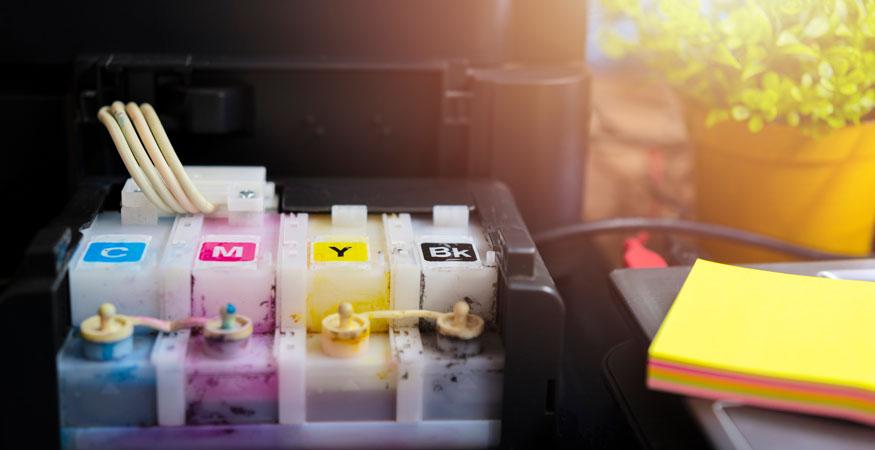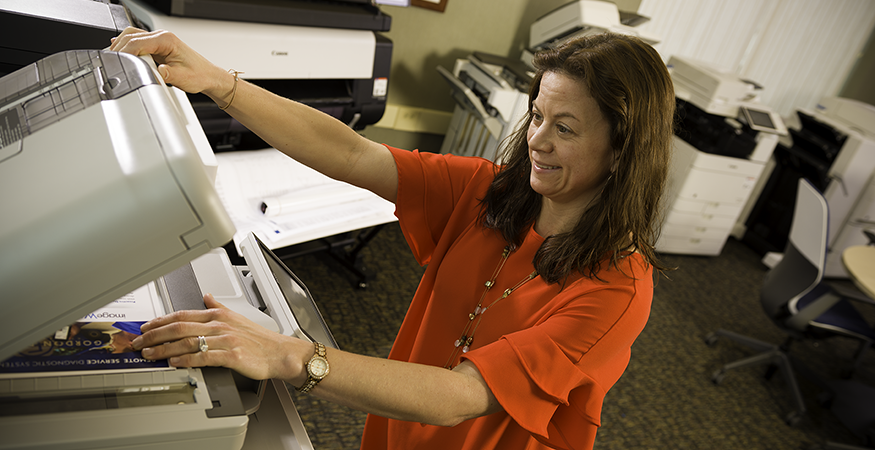Every school district in the country is looking for ways to trim budgets without compromising student learning. Inflation is affecting many schools in the same way it’s impacting families, leading them to take a fresh look at potential cost-saving measures.
Over the years, most districts have upgraded systems and processes to maximize efficiencies, but taking a look at seemingly smaller line items could produce significant results over time.
How can school districts save money? Here are five ideas to implement.
- Reduce Printing and Paper Use
- Track Toner Inventory
- Streamline Business Processes
- Choose ENERGY STAR® Equipment
- Perform Routine Maintenance
1. Reduce Printing and Paper Use
On average, a typical school prints 2,000 sheets of paper each day, with a daily cost of about $100. That can add up to tens of thousands of dollars each year. There are potential ways to cut those costs in half.
The first is to implement pull printing, which simply means that a print job won’t print until someone goes to the printer and releases it with a PIN or reader badge. This can help eliminate the common problem of someone printing multiple copies and then leaving them sit on the printer indefinitely, only to have them end up in the recycling bin. Another easy solution is ensuring that your printer’s default setting is set to duplicate printing, meaning documents are printed on both sides. This simple step has the potential to cut print jobs in half!
The use of print management software like PaperCut or uniFLOW can help enforce policies that encourage good print behavior. This might include routing larger jobs to high-speed printers, asking users to confirm single-sided copies or preventing printing on the wrong sized paper. The scanning function of modern printers also helps reduce print costs, allowing users to email documents rather than print them. This type of software can also track real-time usage — who’s printing, how much and how often — so that you can address inefficiencies.
2. Track Toner Inventory
Tracking toner inventory might not seem like a cost saving measure, but you’ll likely think otherwise when you unexpectedly run out and have to pay a premium at a retail office supply store. Costs associated with downtime and lost labor also need to be factored in. If there are multiple campuses, keeping the right amount of toner and supplies on hand so you don’t run out (without taking up too much space) can be a major pain point.
Implementing a just-in-time toner program with a Managed Print provider can help reduce associated costs. They can remotely monitor toner levels on each print device in a fleet. When the supply drops to a predetermined threshold, their team is notified to send a replacement which typically arrives the next day with a label showing exactly where and to whom it should be delivered.
3. Streamline Business Processes
Many school districts have processes that have been in place for decades, but a “do what we’ve always done” approach to managing operations could pose financial risks. Whether it’s HR, accounting or other administrative functions, streamlining processes and leveraging technology to do it can make a significant difference.
Hiring a business process analyst might be a consideration. They’ll likely introduce you to technologies like Enterprise Content Management (ECM) systems which can transform a school’s workflows and save operational costs.
ECM can digitize student records and other documents, helping to reduce storage costs. But it is more than simply a repository of information. ECM automation can help streamline repeatable processes, like accounts payable, onboarding and more. It also helps boost productivity and improve workflows, security and compliance. Over time, the productivity gains can be significant.
RELATED: See How Green Bay School District Leveraged ECM
4. Choose ENERGY STAR® Equipment
Some estimates suggest that 25% of the nation’s schools’ energy costs could be saved each year by using energy-saving technology. Not only will using ENERGY STAR-rated machines help save on energy costs, it will also help support a school’s green initiatives.
Consider minimizing the use of individual printers and desktop printers as they are typically not ENERGY STAR rated. Plus, they use excess toner and require frequent repairs or replacement. They may seem cheap on the front end, but end up costing more in the long run.
Many ENERGY STAR printers automatically power down into sleep mode when not in use, helping to conserve energy. Rated devices are typically factory set to deliver maximum energy saving performance, but it helps to double check.
5. Perform Routine Maintenance
Whether it’s a school’s HVAC, plumbing or alarm system, routine preventative maintenance can keep them running smoothly and save on costly emergency repairs. Waiting until something breaks is a costly approach to managing an organization.
The same goes for a fleet of printers. One of the core responsibilities of a Managed Print service is to monitor devices to ensure they’re functioning properly, and to perform routine maintenance checks. The costs to repair or replace a piece of equipment after it’s malfunctioned will far exceed the cost of preventative maintenance visits.
Every dollar saved using these cost-cutting measures is another dollar that can be used to enhance student learning. If you haven’t assessed your technology environment recently, it’s a good idea to do so, especially since school environments have shifted considerably in recent years. View our helpful guide below to see how a Managed Print program can help support your school’s initiatives.
To learn how Troyka-TC can help your school district save money and streamline your operations, request a complimentary technology assessment today.










